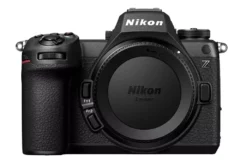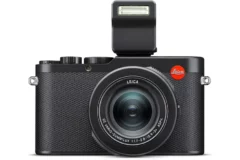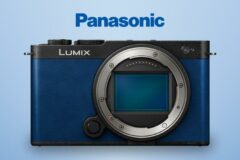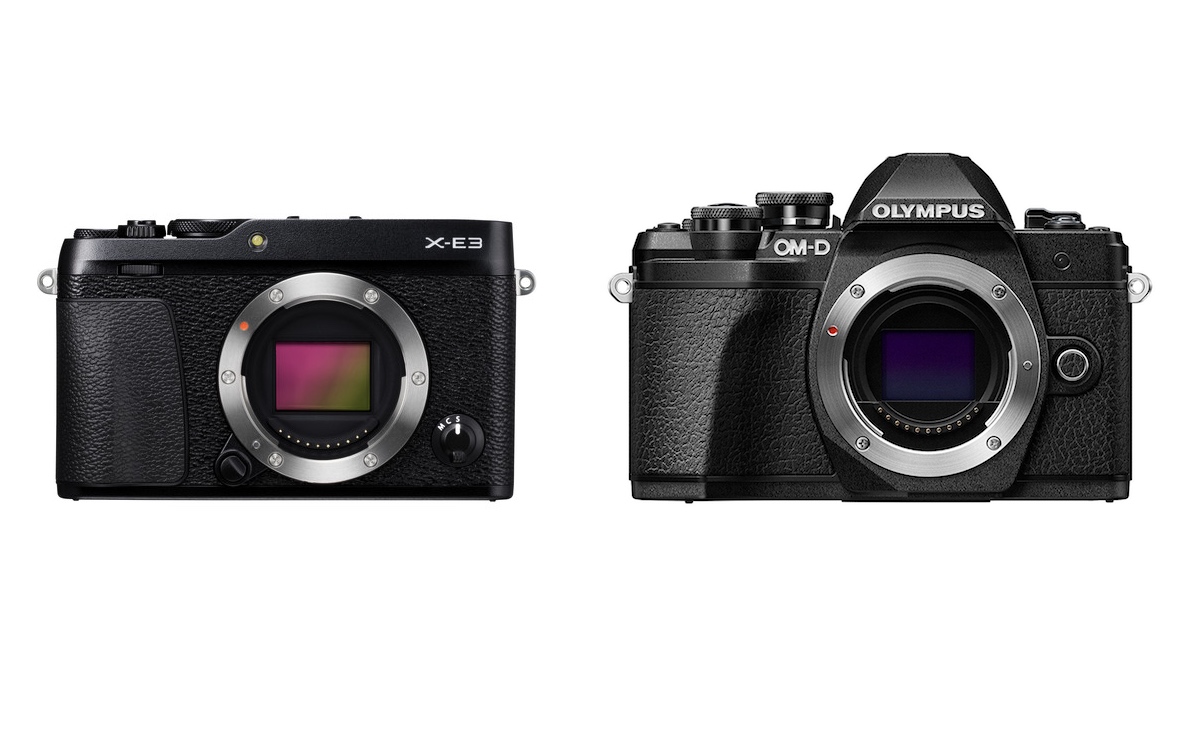Fujifilm X-E3 vs Olympus E-M10 III – Comparison
Here is the quick review and comparison of Fujifilm X-E3 vs Olympus E-M10 III. In this article you can find the key differences between Fujifilm X-E3 vs Olympus E-M10 III mirrorless cameras.
Fujifilm has unveiled the X-E3 mirrorless camera with 24MP sensor and 4K video. Designed in a more compact and lightweight body, the new rangefinder-style camera is a more touchscreen-driven model to the SLR-like X-T20.
The Olympus E-M10 Mark III has a 16.1-megapixel Four Thirds CMOS sensor powered by a dual quad-core TruePic VIII Processor. This is the same processor used in the E-M1 Mark II. There’s 4K video recording and the continuous shooting goes up to 8.5 frames per second. The Micro Four Thirds camera is selling for $650 body only. See the first tests with samples.
Let’s have a brief look at the main features of Fujifilm X-E3 vs Olympus E-M10 III. So what may be the main differences when consider their specs list? Current Fuji users might want to check out the X-E3 vs X-T20 vs X-T2 vs X-E2S – Comparison too.
Differences between Fujifilm X-E3 vs Olympus E-M10 III Cameras
If you’re trying to decide which one to buy as your first camera, here are the differences of Fujifilm X-E3 vs Olympus E-M10 III cameras. Our comparison table below covers all the important specifications of each camera.
Fujifilm X-E3 vs Olympus E-M10 III Comparison Table
| Features | Fujifilm X-E3 | Olympus E-M10 III |
|---|---|---|
| Sensor resolution | 24MP APS-C CMOS | 16.1 Live Mos |
| AA Filter | No | N/A |
| Max Image Resolution | 6000 x 4000 | 4608 x 3456 |
| Image Stabilization | No | Sensor-shift |
| ISO | Auto, 200 – 12800 (expandable to 100-51200) | Auto 200 – 25,600 |
| AF System | Phase Detection: 325 | Contrast Detection: 121 |
| LCD | 3.0″ – Fixed-type 1,040,000 dots | 3.0″ 1,040,000 dots Articulating Touchscreen LCD |
| Viewfinder | EVF 0.62x magnification 100% coverage |
EVF 0.62x magnification 100% coverage |
| Shutter Speed | 30-1/4000 sec | 60-1/16000 sec |
| Built-in Flash | No | Yes |
| Burst Speed | 8fps | 8.5fps |
| Exposure Compensation | ±5 (at 1/3 EV, 1/2 EV steps) | +/- 5.0EV in 0.3EV steps |
| Video Recording (max. res) |
4K UHD/30p, 25p, 24p | 4K UHD/30p, 25p, 24p |
| Time Lapse | Yes | Yes |
| Jpeg Buffer Size | 62 | unlimited |
| RAW Buffer Size | 25 | 33 |
| Mic Input | Yes | Yes |
| Headphone Jack | No | No |
| Wireless Connectivity | Wi-Fi + NFC | Wi-Fi |
| USB Charge | Yes | Yes |
| Environmentally Sealed | No | No |
| Battery Life | 350 shots | 330 shots |
| Dimensions | 121 x 74 x 43mm | 122 x 84 x 50 mm |
| Weight | 337 g | 503 g |
| Price | $899 | $650 |
Conclusion
Big difference between Fujifilm X-E3 vs Olympus E-M10 III is sure the sensor size. Fuji X-E3 uses APS-c sized image sensor and the E-M10 III comes with Micro 4/3rds. We think this is one of the biggest reasons for the $200 price difference.
Other than that Olympus E-M10 III is purely an entry-level camera that features 4K video recording and 8.5fps burst shooting. Fuji X-E3 is a rangefinder-style compact and lightweight camera. The camera provides better image quality for professionals as a second gear on the go.
For beginners who are much desperate to get a camera with 4K video in a budget-friendly price should go with Olympus E-M10 III. On the other hand we recommend users who can afford the price difference to decide at X-E3 without thinking.









